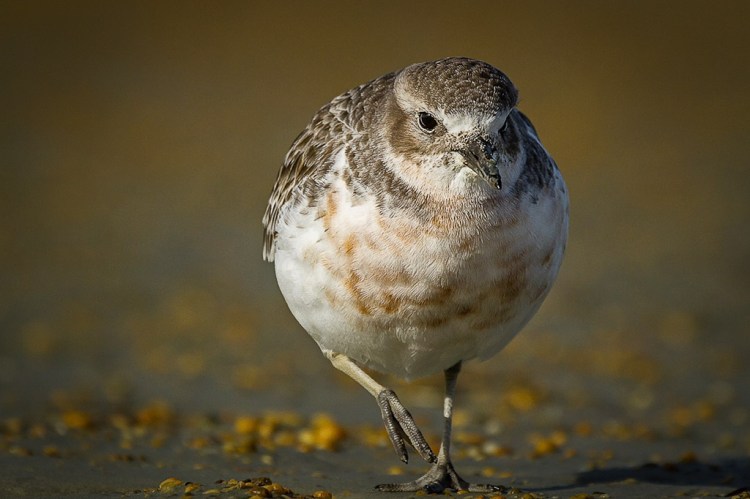Ecologist Rachel Hufton reports
Many shorebird populations are in serious decline along the East Asian-Australasian Flyway. The rapid loss of coastal wetlands (attributed to land reclamation) in the Yellow Sea, which provide critical stop-over/ re-fuelling sites for shorebirds during migration is believed to be the cause of this alarming trend. The Yalu Jiang coastal wetland, a protected area in the north Yellow Sea, supports the largest known migratory staging population of bar-tailed godwits and great knot. Now, these shorebirds are further at risk as essential food resources such as bivalves and crustaceans are further under pressure due to a record cold weather period – the coldest in 69 years.

Bar-tailed godwits and red knots are currently looking their finest (in alternate plumage and full body weight) in preparation to leave New Zealand and begin migration north to their Alaskan breeding grounds. Most of New Zealands godwits have begun migration or have already arrived at the stop-over site in China at Yalu Jiang National Nature Reserve. Here a variety of shorebirds depend on the availability of abundant reserves of bivalves, crustaceans and polychaete worms to promote good body condition and breeding success. This year there are likely to be a lot of hungry shorebirds such as flocks of bar-tailed godwit (a IUCN Red List species) which might not complete their journey to Alaska to breed.

What Can Be Done
An ambitious plan to create a giant bird feeder kilometres long and wide, with farmed shellfish dropped over the mudflats to feed the birds and help them on their way to their breeding sites in good condition.
As well as helping the birds continue their life cycle this year, this work will also provide information about future mitigation/ compensation strategies for shorebirds. The mudflats of the Yellow Sea are being destroyed through reclamation and, increasingly more common extreme weather events.

Immediate action is required to help contribute to funds already raised to feed the shorebirds at Yalu Jiang coastal wetland. The Pukorokoro Miranda Naturalist Trust (PMNT) is collecting donations in New Zealand to be transferred to the Hong Kong Birdwatching Society, a Birdlife International Partner.
Nelson Ecologist and Ornithologist David Melville is currently working in China and confirms that so far half the total funds required have been raised, but any further contributions would be much appreciated.
“We need to act fast as the seeding of clams has to take place on the spring tide series in Mid-April, or not at all.” He said (Radio NZ).

This article highlights the importance of maintaining the quality of protected shorebird staging sites and other habitat, as important in shorebird conservation as is safeguarding of staging sites from land reclamation.
In New Zealand, pressure of pollution and coastal development are common and the outlook for shorebirds is a concern particularly for endemic species such as dotterel and wrybill as well as wintering Arctic migrants. However, the pressure here is on a reduced scale in comparison to the rate of habitat loss in the Yellow Sea – a global threat to shorebirds difficult to compensate.
Hope on the horizon
In January this year China announced it would dramatically curb reclamation of wetland for commercial development. A decision that can only have a positive impact on shorebird populations. Ongoing joined up international conservation efforts are essential for the future of endangered shorebirds.

Reference
Shou-Dong Zhang, Zhijun Ma, Chi-Yeung Choi, He-Bo Peng (2018). Persistent use of a shorebird staging site in the Yellow Sea despite severe declines in food resources implies a lack of alternatives. Bird Conservation International.
Rachel Hufton is a former shorebird guide of Pukorokoro Miranda Shorebird Centre (sister site of Yalu Jiang National Nature Reserve) and a founding member of the Aspiring Biodiversity Trust






















